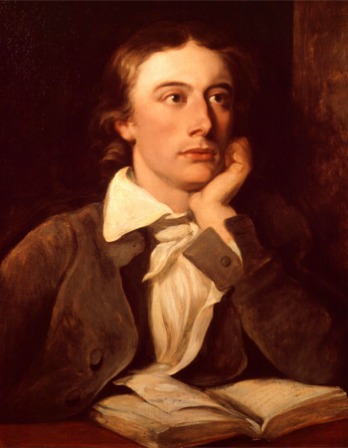A Thing of Beauty Summary – Complete Explanation & Q&A

Table of Contents
“A Thing of Beauty” by John Keats is a timeless poem that celebrates the enduring power of beauty in our lives. The poet emphasizes how things of beauty whether in nature, literature, or memories, bring joy, peace, and inspiration that never fades.
In this blog, we will explore a detailed summary of the poem, its themes, character insights, and important takeaways. We will also discuss its relevance for students and how understanding such poetry can enhance appreciation for literature and life.
A Thing of Beauty Summary
Stanza 1
Poem:
A thing of beauty is a joy forever
Its loveliness increases, it will never
Pass into nothingness; but will keep
A bower quiet for us, and a sleep
Full of sweet dreams, and health, and quiet breathing.
Summary:
Keats begins the poem by asserting that true beauty has an eternal quality, it is a joy that never fades. Unlike transient pleasures, beauty continues to grow in significance over time, offering lasting delight. It acts as a refuge for the mind, providing a “bower quiet,” or a peaceful retreat, where one can rest undisturbed. Beauty brings wholesome effects such as restful sleep, pleasant dreams, good health, and calm breathing. This stanza emphasizes that the experience of beauty is not fleeting but a lifelong source of comfort and mental nourishment.
Explore Poetry with PlanetSpark!
Book a free demo to dive into poems like A Thing of Beauty and enhance reading comprehension.
Stanza 2
Poem:
Therefore, on every morrow, are we wreathing
A flowery band to bind us to the earth,
Spite of despondence, of the inhuman dearth
Of noble natures, of the gloomy days,
Of all the unhealthy and o’er-darkened ways
Made for our searching: yes, in spite of all,
Some shape of beauty moves away the pall
From our dark spirits.
Summary:
Keats explains that beauty is a remedy against life’s difficulties and sorrows. Despite human suffering, moral decay, and gloomy days, people continue to find joy in beautiful things. Each day, humans figuratively “wreathe a flowery band”; they seek and embrace forms of beauty that connect them to life and hope. Beauty removes the gloom (“pall”) from our spirits, providing a counterbalance to despair. This stanza highlights the sustaining power of beauty, showing how it gives courage, cheer, and resilience, even when life seems bleak.
Stanza 3
Poem:
Such the sun, the moon,
Trees old, and young, sprouting a shady boon
For simple sheep; and such are daffodils
With the green world they live in; and clear rills
That for themselves a cooling covert make
‘Gainst the hot season; the mid forest brake,
Rich with a sprinkling of fair musk-rose blooms;
Summary:
In this stanza, Keats illustrates the presence of beauty in the natural world. The sun and the moon, old and young trees, and green pastures provide joy and comfort. Flowers like daffodils, streams, and forest glades offer refreshing and cooling sights, giving relief from harshness or monotony in life. Nature’s beauty is accessible, simple, and restorative. Keats emphasizes how observing these elements of nature brings inner calm, happiness, and a connection to the larger world, allowing humans to experience joy even in ordinary settings.
Stanza 4
Poem:
And such too is the grandeur of the dooms
We have imagined for the mighty dead;
All lovely tales that we have heard or read;
An endless fountain of immortal drink,
Pouring unto us from the heaven’s brink.
Summary:
Keats expands the concept of beauty to human imagination and creativity. The “grandeur of the dooms” refers to heroic deeds and achievements of the mighty, while stories, myths, and literature serve as vessels of beauty. These imagined or read tales act as an “endless fountain,” continuously inspiring and nourishing the human spirit. Beauty, therefore, is not limited to nature; it exists in art, literature, history, and human thought. It uplifts, educates, and provides spiritual enrichment, leaving a lasting impact on those who experience it.

A Thing of Beauty Questions and Answers
1. List the things of beauty mentioned in the poem.
The poem mentions many things of beauty found in nature, literature, and imagination. Some of these include:
The sun and the moon
Trees, both old and young, providing shade
Daffodils and musk-rose blooms
Clear streams and forest glades
Lovely tales that we hear or read
The grandeur of heroic deeds of the mighty dead
These things of beauty provide joy, peace, and inspiration to humans.
2. List the things that cause suffering and pain.
Keats refers to the darker aspects of life that bring suffering, such as:
Despondence and sorrow
The inhuman dearth of noble or virtuous people
Gloomy days
Unhealthy and over-darkened paths in life
Despite these hardships, beauty acts as a balm to lighten our spirits.
3. What does the line, ‘Therefore are we wreathing a flowery band to bind us to earth’ suggest to you?
This line suggests that humans, in spite of life’s hardships and sorrows, seek and embrace beauty to remain connected to life. The “flowery band” is a metaphor for the joy, hope, and pleasure that beauty provides, binding humans to the world and encouraging them to appreciate life.
4. What makes human beings love life in spite of troubles and sufferings?
Human beings love life because beauty exists everywhere, nature, art, literature, and imagination. Even amidst difficulties, things of beauty uplift the spirit, provide hope, and make life worth living. They act as a source of comfort, joy, and inspiration, helping people overcome despair.
5. Why is ‘grandeur’ associated with the ‘mighty dead’?
Keats associates grandeur with the mighty dead to highlight the lasting inspiration of heroic deeds and achievements. The courage, power, and accomplishments of great individuals become a source of beauty for human imagination, motivating and uplifting future generations.
6. Do we experience things of beauty only for short moments or do they make a lasting impression on us?
According to the poem, true beauty is eternal. It is “a joy forever” that increases in value over time. Beautiful experiences leave a lasting impression, providing continuous comfort, inspiration, and mental peace rather than fleeting pleasure.
7. What image does the poet use to describe the beautiful bounty of the earth?
Keats uses the image of “an endless fountain of immortal drink, pouring unto us from the heaven’s brink” to describe the abundance of beauty on earth. This metaphor suggests that beauty is limitless, refreshing, and life-giving, nourishing the human spirit endlessly.
Interactive Online Classes!
Join our sessions to discuss themes, analyze poetic devices, and develop critical thinking skills
Poetic Form and Language
Keats maintains a consistent rhyme scheme and line length throughout the poem, which gives it a smooth, flowing rhythm. The balance in his sentences adds to the harmony and musicality of the verse.
For example:
“Of noble natures, of the gloomy days,
Of all the unhealthy and o’er-darkened ways
Made for our searching: yes, in spite of all,”
Notice how each line mirrors the others in length and structure. The repeated use of phrases like “of the” and the careful arrangement of clauses create a sense of order and balance, reflecting the stability and permanence of beauty that Keats celebrates.
This balance in form supports the poem’s theme: even amid life’s chaos and darkness, beauty provides structure, comfort, and joy to the human spirit.
About the Poet

John Keats (1795–1821) was a British Romantic poet known for his vivid imagery and deep appreciation of beauty in the natural world. Although trained as a surgeon, Keats chose to devote his life entirely to poetry, capturing human emotions, nature, and imagination with remarkable sensitivity.
His power lies in his ability to perceive the world deeply and express his moods, thoughts, and aspirations through language. Keats often drew inspiration from classical myths and legends. For instance, in his poem Endymion: A Poetic Romance, he narrates the story of Endymion, a young shepherd who dreams of the Moon Goddess, Cynthia, and embarks on a mystical journey through forests and under the sea.
This deep connection with nature and myth, along with his celebration of beauty, is central to Keats’ poetry, including A Thing of Beauty.
Themes of A Thing of Beauty
Enduring Beauty and Its Joy
The central theme of the poem is that beauty is everlasting. Keats emphasizes that a thing of beauty brings continuous joy, offering solace and comfort, even amidst life’s struggles. Beauty does not fade; it remains a source of inspiration and happiness.Nature as a Source of Pleasure
Keats celebrates the natural world: sun, moon, trees, flowers, rills, and forests, as eternal sources of delight. Nature’s simple pleasures uplift the human spirit and provide moments of peace and serenity.Human Resilience Amidst Suffering
The poem contrasts beauty with the sorrows of life, including despondence, inhumanity, and gloom. Despite these hardships, beauty motivates humans to endure, creating a “flowery band” that binds us to life and gives us hope.Art and Literature as Immortal Sources of Joy
Keats includes the “grandeur of the dooms of the mighty dead” and “all lovely tales that we have heard or read,” highlighting that art, stories, and history also embody beauty. These creations inspire, teach, and remain an enduring fountain of joy.Philosophical Reflection on Life
The poem conveys a philosophical message: even in a world filled with suffering and darkness, beauty offers meaning, comfort, and spiritual nourishment. It encourages mindfulness and appreciation of life’s aesthetic and moral values.
Literary Devices in A Thing of Beauty
Imagery: Keats uses vivid imagery to describe the beauty in nature, like “daffodils / With the green world they live in” and “clear rills that for themselves a cooling covert make.” These images help readers visualize and feel the joy of beauty.
Alliteration: The repetition of consonant sounds enhances the musical quality of the poem, e.g., “full of sweet dreams, and health, and quiet breathing.”
Personification: Beauty is given human qualities, such as moving “away the pall / From our dark spirits,” showing its power to uplift human emotions.
Metaphor: The poet compares life’s joys and nature to an “endless fountain of immortal drink,” symbolizing the everlasting impact of beauty.
Symbolism: Natural elements like the sun, moon, trees, and rivers symbolize hope, peace, and the restorative power of nature.
Rhyme and Rhythm: The consistent rhyme scheme and balanced line length give the poem a harmonious and flowing rhythm, reflecting the calmness and pleasure that beauty brings.
Hyperbole: Keats sometimes exaggerates to emphasize beauty’s enduring effect, e.g., “A thing of beauty is a joy forever.”
Contrast: The poet contrasts life’s struggles and gloom (“despondence… gloomy days”) with the uplifting power of beauty, highlighting its significance in human life.
Key Takeaways from A Thing of Beauty
Beauty is eternal and provides lasting joy, comfort, and inspiration.
Nature: sun, moon, trees, flowers, and rivers uplifts the human spirit.
Life has struggles, gloom, and suffering, but beauty motivates resilience.
Art, literature, and historical grandeur preserve beauty and teach valuable lessons.
Appreciating beauty helps humans connect to life, find peace, and maintain hope.
Keats’ poem encourages mindfulness, reflection, and cherishing the simple joys of the world.
Analysis of A Thing of Beauty
John Keats’ poem celebrates the enduring power of beauty in human life. He emphasizes that beauty is not fleeting; it “is a joy forever” and continues to uplift and inspire even in moments of despair. Through vivid imagery of nature such as the sun, moon, trees, daffodils, and clear streams, Keats illustrates how the natural world provides comfort, peace, and a sense of connection.
The poet also acknowledges the darker side of life, including human suffering, gloom, and the scarcity of noble characters. Yet, beauty counters these negatives, giving humans reasons to love life and persevere. Keats extends this idea to art and literature, suggesting that stories, poetry, and the grandeur of past heroes create an “endless fountain of immortal drink,” nourishing the spirit.
Structurally, the poem maintains a flowing rhythm and balanced rhyme scheme, which mirrors the harmony and consistency of beauty itself. Keats’ language combines sensory richness with philosophical depth, making the poem both aesthetically pleasing and thought-provoking.
Ultimately, the poem teaches readers that beauty, whether in nature, art, or human experiences, has a profound and lasting impact on our emotional and spiritual well-being.
Readers Also Read
The Tiger King – A satirical tale about pride, fate, and human folly as a king hunts 100 tigers, ignoring a prophecy.
Keeping Quiet – Pablo Neruda’s poem urging silence and introspection to understand oneself and the world.
Poets and Pancakes – A humorous look at life in Gemini Studios, exploring creativity, identity, and work.
My Mother at Sixty-Six – Kamala Das reflects on her mother’s aging, highlighting love, loss, and the passage of time.
Lost Spring – Stories of underprivileged children deprived of childhood, exploring poverty and social injustice.

Why Choose PlanetSpark?
“A Thing of Beauty” teaches us to appreciate the lasting joy and inspiration that beauty brings to life. At PlanetSpark, we help students connect deeply with these themes through engaging poetry programs that go beyond just reading the text.
Personalized Learning: Tailored lessons help students understand poetic devices, imagery, and deeper meanings in poems like A Thing of Beauty.
Interactive Sessions: Online classes make poetry fun and engaging, allowing students to discuss interpretations, emotions, and literary techniques.
Focus on Critical Thinking: Lessons encourage students to explore themes, analyze language, and reflect on how poetry mirrors life.
Practical Worksheets and Activities: Students reinforce learning with exercises, stanza summaries, and Q&A practice.
Expert Mentors: Experienced teachers guide students through poetry, ensuring clarity and confidence in comprehension.
Flexible Learning: Online sessions allow students to learn from home at their own pace, making literature education convenient and effective.
Conclusion
“A Thing of Beauty” by John Keats reminds us that beauty in the world, whether in nature, art, or noble deeds, offers lasting joy and solace. By appreciating both the simple and grand forms of beauty, we find hope, peace, and inspiration even in the most challenging times. This poem encourages readers to notice and celebrate the wonders around them, teaching that true beauty enriches life and uplifts the human spirit.
FAQs
Q1: What is the central theme of “A Thing of Beauty”?
The poem highlights that beauty, whether in nature, art, or noble acts, brings enduring joy and comfort to life.
Q2: What are some examples of beauty mentioned in the poem?
Keats mentions the sun, moon, trees, daffodils, clear rills, fair musk-rose blooms, and lovely tales as things of beauty.
Q3: How does Keats describe the lasting effect of beauty?
He suggests that beauty never passes into nothingness but continues to inspire, comfort, and bring joy forever.
Q4: Why is “grandeur of the mighty dead” considered beautiful?
Keats views the heroic deeds of great individuals and the legacy they leave behind as a form of beauty that inspires and uplifts the living.
Q5: How can students understand this poem better?
By breaking the poem stanza by stanza, exploring its imagery, and discussing the emotions it evokes, students can gain a deeper appreciation of Keats’ message.
Download Free Worksheets
Personalized Communication Report
Record a video to get a AI generated personalized communication report for your child

Hi There, want to try these
tips for your child with
LIVE with our expert coach?
Let's check your child's
English fluency

